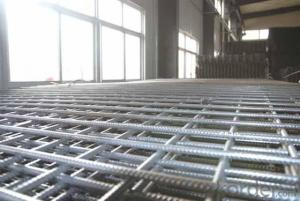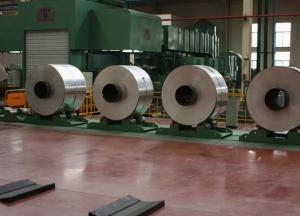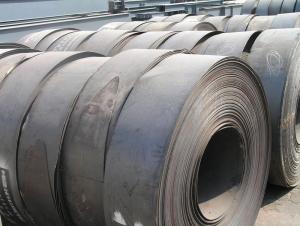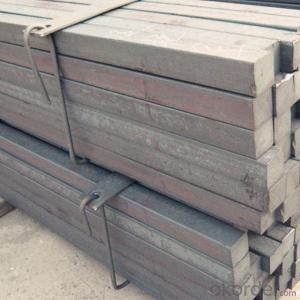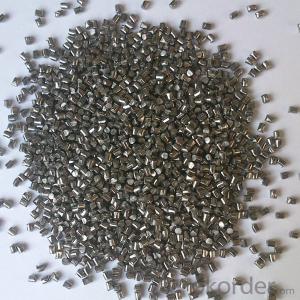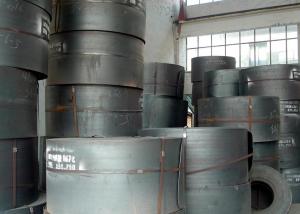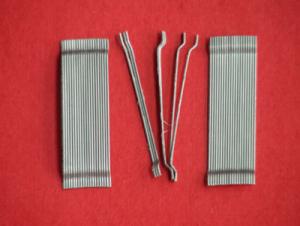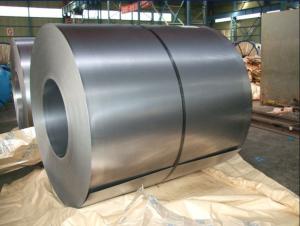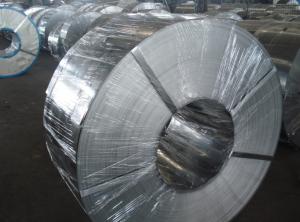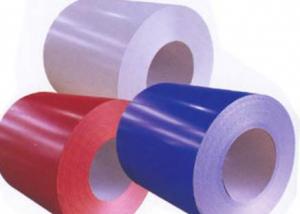STEEL BAR WELDED MESH
- Loading Port:
- China Main Port
- Payment Terms:
- TT OR LC
- Min Order Qty:
- -
- Supply Capability:
- -
OKorder Service Pledge
OKorder Financial Service
You Might Also Like
.Steel Bar welded wire mesh made of low carbon steel wire rod, which undergo a cold-rolling and straightening process and arranged vertically in proper spacing in the welding machine at the line wires and cross wires, joint together by mean of electric resistance spot-welding, also directly welded with hot rolled wire rods
The reinforcing mesh has following merits:Great hardness, good elasticity, uniformity spacing high welding strength, hard to deform by trample
2. Properties of products
Iterm | HRB-335Hot-rolled | HRB-335Hot-rolled | HRB-550cold-rolled |
Tensilestrength (MPA) | .>490 | .>570 | >550 |
Yield strength (MPA) | >335 | >400 | >550 |
Elongation % | >16 | >14 | >8 |
Shearing force (N) | >150 x AS | .150 XAS | >150 XAS |
3.Technical standard:
Cold rolled ribbed steel bar: CRB 550
Hot rolled ribbed steel bar: HRB 400
We not only produce as per the national standard of welded mesh fabric for reinforcement of concrete but also the products according to the AS/NZS 4671:2001( Australian and New Zealand standard), BS4483 (English standard), DIN488 (Germany standard),SIA 16211 AND NFA35-016 France and etc.
4.The specification of Steel Bar Welded Wire Mesh
Wire diameter:4mm-16mm
Space center of neighbor steel bar
Vertical : 100mm,150mm,200mm,300mm
Horizontal:100-400mm
Width:0.5m-3m
Lengt:2m-6m
Steel bar welded grating is well received and popularly used as a kind of new, efficient and excellent quality concrete structure steel materials in various industrial and civil buildings. It is mainly used in making of floors, ceilings, wall body, concrete road, bridge surface, airport, tunnel lining, concrete piping, etc.
- Q:What are the different types of steel wires and their applications in telecommunications?
- There are several types of steel wires commonly used in telecommunications. One of the most widely used types is galvanized steel wire, which is coated with a layer of zinc to protect against corrosion. This type of wire is commonly used for overhead lines, such as telephone and power lines. Another type is high-carbon steel wire, which is known for its strength and durability. This type of wire is commonly used for applications that require high tensile strength, such as antenna cables and suspension wires. Stainless steel wire is another commonly used type, known for its resistance to corrosion and heat. It is often used in applications where exposure to harsh environmental conditions is expected, such as submarine cables and satellite dish supports. Lastly, copper-clad steel wire is a type of wire that combines the conductivity of copper with the strength of steel. It is commonly used for grounding applications in telecommunications systems. Overall, the different types of steel wires have various applications in telecommunications, ranging from overhead lines to antenna cables, grounding systems, and support structures. Each type of wire offers specific characteristics that make it suitable for different telecommunications needs.
- Q:What are the different types of steel profiles used in architecture?
- There are several different types of steel profiles used in architecture, including beams, columns, channels, angles, and tubes. These profiles are often chosen based on their specific structural properties and aesthetic appeal, and they play a crucial role in providing strength and support to various architectural structures.
- Q:What is the difference between hot rolled and cold rolled steel?
- The main difference between hot rolled and cold rolled steel lies in the manufacturing process. Hot rolled steel is produced at extremely high temperatures, which results in a rougher surface finish and less precise dimensions. Cold rolled steel, on the other hand, is processed at lower temperatures, allowing for a smoother surface finish and tighter tolerances. Additionally, hot rolled steel tends to be more malleable and ductile, while cold rolled steel is generally stronger and harder.
- Q:How are steel tubes used in plumbing and HVAC systems?
- Steel tubes are commonly used in plumbing and HVAC systems due to their strength, durability, and resistance to corrosion. In plumbing, they are used to transport water, gas, and other fluids from one point to another. In HVAC systems, steel tubes are utilized for the distribution of air, refrigerants, and other gases. Their ability to withstand high pressure and temperature makes them a reliable choice for these applications. Additionally, steel tubes are often preferred for their ease of installation and maintenance, ensuring efficient functioning of plumbing and HVAC systems.
- Q:What are the different types of steel fasteners?
- There are several types of steel fasteners, including screws, bolts, nuts, washers, and rivets. Each type has its own specific function and design, making them suitable for different applications and industries.
- Q:How are steel products used in the manufacturing of furniture?
- Steel products are used in the manufacturing of furniture as structural components, such as frames, legs, and supports. Steel's strength and durability make it an ideal material for ensuring stability and longevity in furniture. Additionally, steel can be shaped and welded into various designs, allowing for versatile and modern furniture styles.
- Q:How is steel used in the production of electrical equipment?
- Steel is used in the production of electrical equipment due to its high strength and durability. It is commonly used to manufacture electrical enclosures, cabinets, and support structures for transformers, generators, and other heavy equipment. The steel components provide a robust and protective housing, ensuring the safety and longevity of the electrical equipment.
- Q:What are the main factors to consider when selecting steel products for a specific application?
- When selecting steel products for a specific application, there are several key factors to consider. Firstly, the intended use and the specific requirements of the application should be carefully evaluated. This includes factors such as load-bearing capacity, corrosion resistance, and temperature resistance. Secondly, the properties of the steel, such as its strength, ductility, and hardness, need to be considered in relation to the application's demands. Additionally, the cost and availability of the steel should be considered, as well as any relevant industry standards and regulations. Lastly, factors like the required fabrication processes, surface finish, and aesthetics may also play a role in the selection process. Overall, a thorough assessment of these factors will help ensure that the chosen steel product is suitable for the intended application.
- Q:What are the advantages of using steel for construction purposes?
- There are several advantages of using steel for construction purposes. Firstly, steel is incredibly strong and durable, making it capable of withstanding heavy loads and extreme weather conditions. Additionally, steel is a flexible material that can be easily molded into various shapes and sizes, allowing for versatile and creative designs. Moreover, steel is resistant to fire, corrosion, and pests, ensuring the longevity and safety of the structure. Furthermore, steel construction is faster and more efficient compared to traditional methods, reducing construction time and costs. Lastly, steel is a sustainable option as it is recyclable, minimizing environmental impact.
- Q:What are the common types of steel products used in the pet grooming and care industry?
- The common types of steel products used in the pet grooming and care industry include grooming scissors, grooming shears, grooming combs, grooming brushes, and grooming clippers. These steel products are essential for maintaining the hygiene and appearance of pets during grooming sessions.
1. Manufacturer Overview |
|
|---|---|
| Location | |
| Year Established | |
| Annual Output Value | |
| Main Markets | |
| Company Certifications | |
2. Manufacturer Certificates |
|
|---|---|
| a) Certification Name | |
| Range | |
| Reference | |
| Validity Period | |
3. Manufacturer Capability |
|
|---|---|
| a)Trade Capacity | |
| Nearest Port | |
| Export Percentage | |
| No.of Employees in Trade Department | |
| Language Spoken: | |
| b)Factory Information | |
| Factory Size: | |
| No. of Production Lines | |
| Contract Manufacturing | |
| Product Price Range | |
Send your message to us
STEEL BAR WELDED MESH
- Loading Port:
- China Main Port
- Payment Terms:
- TT OR LC
- Min Order Qty:
- -
- Supply Capability:
- -
OKorder Service Pledge
OKorder Financial Service
Similar products
New products
Hot products
Related keywords
